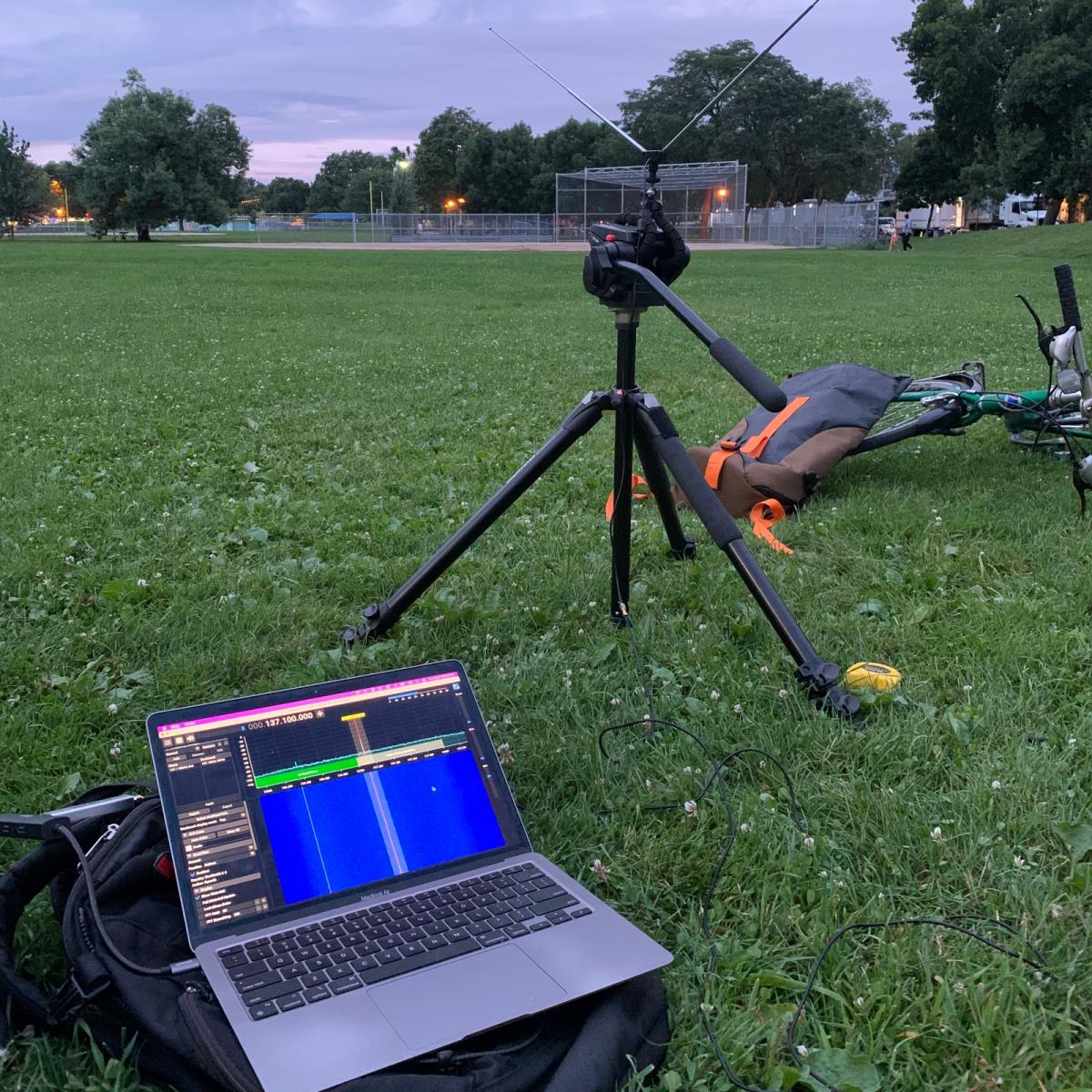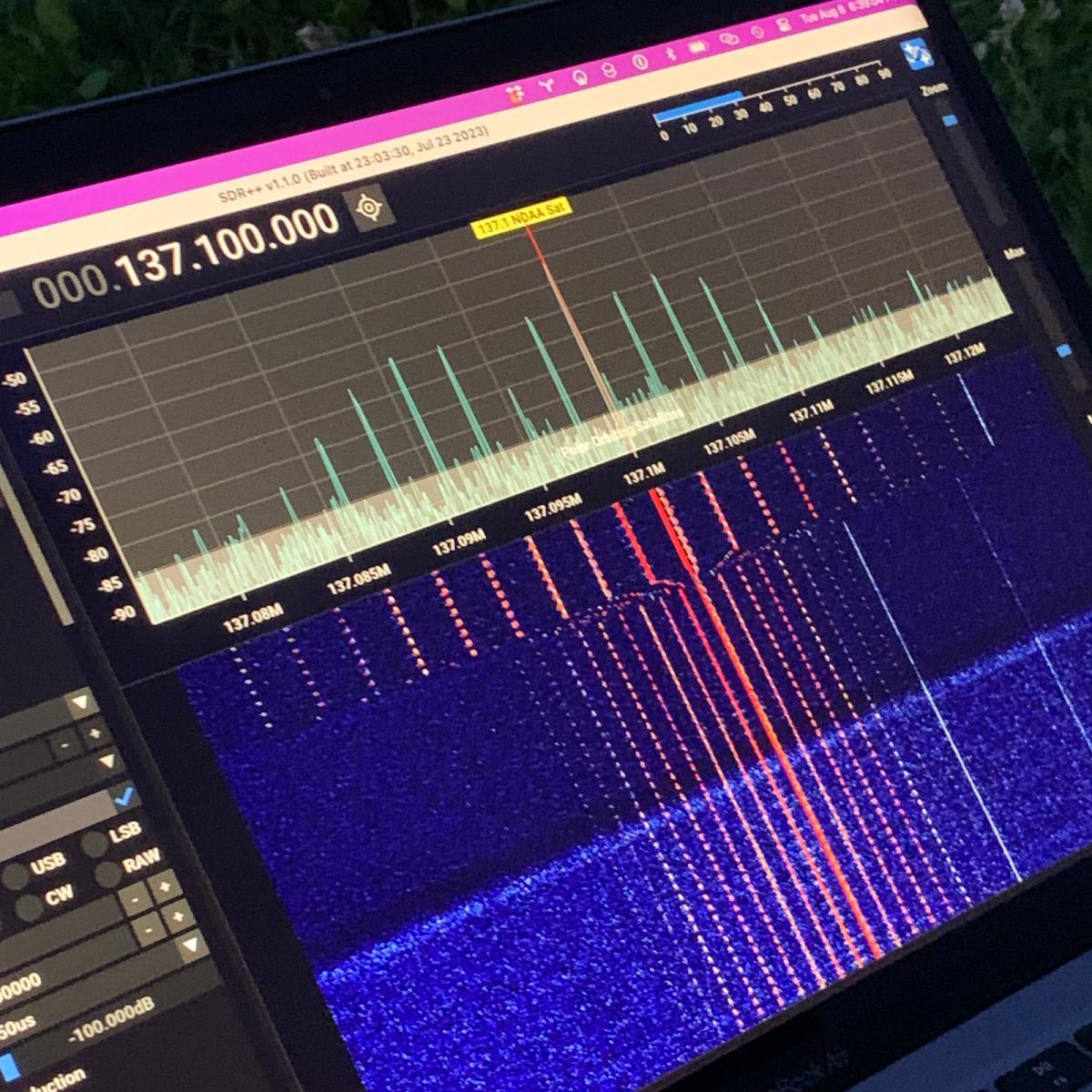Contact a Weather Satellite
Students learn to contact a satellite in space and decode it's message into an image
In this STEM activity, students will learn basics of radio and create their own weather satellite image directly from space
Basics
- Duration: 1 hour
- Ages: 12+
- Price: $250
- Location: in-person in Montréal, outdoors
Québec Curriculum Connections
Material World
D. Systems and interaction
6. Meteorological systems and climates
- a. Makes connections between weather conditions and the types of clouds in the sky
7. Technologies related to the Earth, the atmosphere and outer space
- a. Recognizes the influence and the impact of technologies related to the Earth, the atmosphere and outer space on people’s way of life and surroundings (e.g. prospecting equipment, meteorological instruments, seismograph, telescope, satellite, space station)
Earth and Space
D. Systems and interaction
6. Meteorological systems and climates
- b. Associates the average amount of precipitation with the climate of a region (dry, humid)
- c. Associates the average temperature with the climate of a region (polar, cold, temperate, mild, hot)
7. Technologies related to the Earth, the atmosphere and outer space
- a. Recognizes the influence and the impact of technologies related to the Earth, the atmosphere and outer space on people’s way of life and surroundings (e.g. prospecting equipment, meteorological instruments, seismograph, telescope, satellite, space station)
Earth and Space
A. Characteristics of the Earth
3. Hydrosphere
- a. General characteristics of the hydrosphere
- i. Describes the distribution of fresh water and salt water on the Earth's surface (e.g. glaciers contain inaccessible fresh water)
- ii. Describes the main interactions between the hydrosphere and the atmosphere (e.g. heat exchanges, climate regulation, meteorological phenomena)
4. Atmosphere
- a. General characteristics of the atmosphere
- i. Locates the main layers of the atmosphere (troposphere, stratosphere, mesosphere, thermosphere)
- ii. Describes the composition of pure air at sea level (nitrogen, oxygen, carbon dioxide, water vapour)
- iii. Describes the relationships between the atmosphere and certain human activities (e.g. recreation, transportation, energy consumption)
The Technological World
B. Mechanical engineering
2. Technological systems
- a. System
- i. Identifies a system (set of connected elements that interact with each other) in a technical object or technological application
- ii. Describes the overall function of a technological system
- iii. Names the inputs and outputs of a technological system
- iv. Names the processes and control elements of a technological system
- b. Components of a system
-
Describes the role of the components of a technological system (e.g.explains the role of the parts of a lighting system)
-
Earth and Space
A. Characteristics of the Earth
3. Hydrosphere
- d. Oceanic circulation
- i. Describes factors that affect the circulation of surface currents and deep currents (e.g. wind, the Earth's rotation, temperature, salinity, density)
- ii. Describes the role of thermohaline circulation on global climate regulation (e.g. effect of the Gulf Stream on the climate of the east coast of North America)
4. Atmosphere
-
b. Greenhouse effect
- i. Describes the greenhouse effect
- ii. Explains some of the consequences of a higher concentration of greenhouse gases (e.g. global warming that could result in higher sea levels, disturbances in ecosystems or the melting of glaciers)
- c. Airmass
- i. Describes the properties of an air mass (temperature, humidity, pressure)
- ii. Explains the formation of clouds when two different air masses meet
- d. Atmospheric circulation
- i. Describes the main factors responsible for atmospheric circulation (e.g. pressure variations, uneven heating of the Earth's surface)
- Describes the effect of prevailing winds on the dispersal of air pollutants in a given region
What Your Class Will Learn
- about NOAA weather satellites that orbit around Earth
- how to track a satellite
- how to set up a receiving antenna
- how to know which frequency to tune to
- how to set up a software defined radio on a computer
- how to record audio from a satellite passing overhead
- how to convert that audio signal into an image
Activity
Students will use a smartphone or tablet to find when and where the next NOAA weather satellite will fly overhead. They will help in setting up the radio antenna to receive it's signal.
Students will be guided through the process of receiving and recording signals on the host's computer. Then, at the correct time, they'll hear and see signals from the satellite as it flies 800 kilometres overhead!
After recording the signal, students will learn how to decode the audio file into an image of Earth!
Book Now
Fill out the form below and let's get in touch! You'll receive an email confirmation, then I'll follow-up to confirm a date and anything special you'd like for your presentation.




